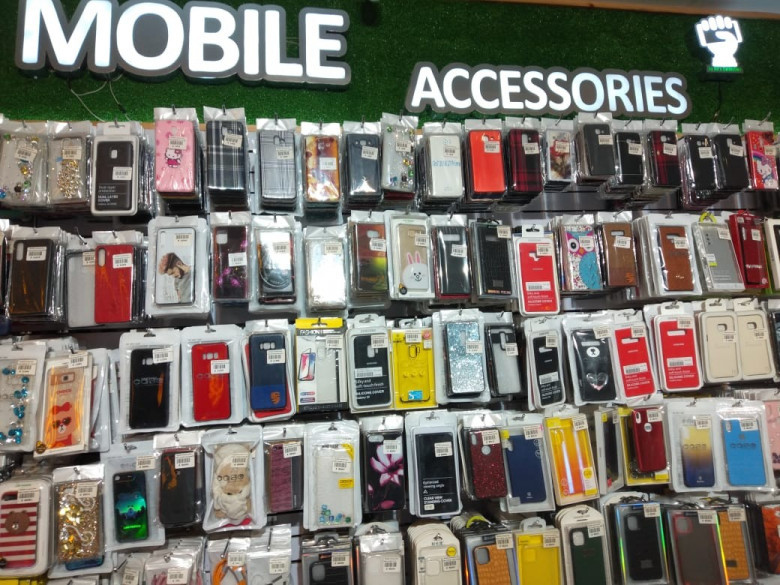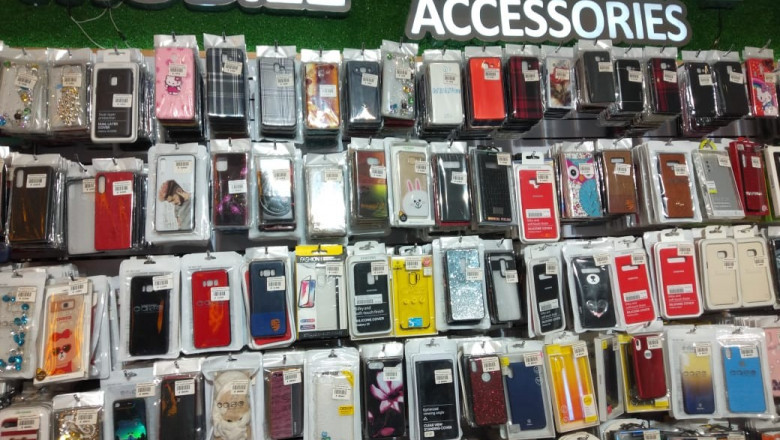views

Introduction
The Mexico Mobile Phone Accessories Market is undergoing a remarkable transformation. While once dominated by low-cost imports and functional add-ons, the industry is now embracing sustainability as a core value proposition. With rising environmental awareness and global momentum for eco-conscious living, eco-friendly mobile accessories—from biodegradable phone cases to recyclable packaging—are beginning to carve out their niche in Mexico.
In this comprehensive article, we explore the emergence of eco-friendly mobile accessories in Mexico, the market trends fueling this evolution, the role of government policies, and the consumer mindset. We also delve into what brands—local and international—are doing to lead the green revolution, and whether this movement is built to last.
The Growing Mobile Accessories Market in Mexico
Mexico ranks among Latin America's most dynamic mobile markets, with over 129 million mobile connections and a smart phone penetration rate nearing 90%. As mobile devices become central to everyday life, the demand for accessories—such as chargers, power banks, earphones, cases, and wearables—has seen exponential growth.
Driven by:
· Higher Smartphone adoption
· Youth-centric digital lifestyles
· E-commerce boom
· Technological innovation (wireless, AI, IoT)
Now, a new layer of value is being added to the equation—sustainability.
What Are Eco-Friendly Mobile Accessories?
Eco-friendly mobile accessories are products designed with a low environmental impact across their lifecycle—manufacturing, use, and disposal. Common eco-friendly features include:
· Biodegradable or compostable materials (e.g., wheat straw, bamboo, cornstarch)
· Recyclable plastics and metals
· Low-carbon manufacturing processes
· Minimal or recyclable packaging
· Longer durability to reduce e-waste
Examples include:
· Phone cases made from plant-based polymers
· Charging cables with braided natural fibers
· Headphones made using recycled aluminum and plastics
· Solar-powered power banks
In Mexico, these products are still a niche, but they are gaining momentum as consumers become more environmentally conscious.
Why the Shift Toward Sustainability?
1. Global Environmental Pressure
The rise in global movements like "Fridays for Future", COP summits, and net-zero emissions goals is influencing companies and consumers alike. As climate change becomes a tangible issue in Mexico—with rising temperatures, droughts, and pollution—eco-conscious behavior is on the rise.
2. Corporate Responsibility
Tech brands like Apple, Samsung, Xiaomi, and emerging disruptors like boAt (Imagine Marketing) and Huawei are introducing eco-elements into their product lines. Examples include:
· Apple removing chargers and earphones from iPhone boxes
· Samsung using ocean-bound plastics in its packaging
· Huawei experimenting with sustainable packaging materials
· Local startups offering handmade bamboo accessories
These moves are influencing the local accessories market, pushing suppliers and retailers to follow suit.
3. Policy & Regulation
Mexico has pledged to reduce its greenhouse gas emissions under the Paris Agreement and is working toward stronger e-waste management policies. Although not yet mandatory, eco-labeling and environmental compliance are expected to be prioritized in trade, especially in the electronics segment.
Are Mexican Consumers Ready to Pay More?
This is the pivotal question for sustainable accessory brands.
1. Price Sensitivity Still Dominates
Mexican consumers are traditionally price-conscious, especially in the mobile accessories space where budget accessories from street vendors and generic imports remain popular. Products like cases and chargers are often replaced every 6–12 months, leading buyers to opt for the cheapest available option.
2. But Conscious Consumerism Is Growing
According to a 2023 study by Statista, over 60% of Mexican millennials and Gen Z are willing to pay more for products that are environmentally friendly. These young consumers—often urban, educated, and tech-savvy—are becoming a core audience for sustainable brands.
Factors influencing willingness to pay more:
· Quality and durability
· Aesthetic appeal
· Social responsibility
· Brand reputation
In Mexico City, Guadalajara, and Monterrey, eco-brands are already finding traction among early adopters.
Key Players Leading the Green Charge in Mexico
1. Pela Case
One of the global leaders in compostable phone cases, Pela offers products made from flax straw and plant-based biopolymers. The brand has gained popularity among Mexican consumers through Amazon Mexico and sustainable lifestyle boutiques.
2. EcoShell MX
A homegrown Mexican brand that produces biodegradable phone cases and chargers from agave and corn-based materials. Their local origin and cultural connection give them a strong market edge.
3. Imagine Marketing Ltd (boAt)
Although better known for affordability and design, boat is experimenting with sustainable packaging and recyclable materials. If the brand introduces a green product line, its price-point advantage could shake up the eco-accessory segment.
4. Apple & Samsung
While high-end, these brands are pushing the sustainability narrative through eco-packaging, carbon-neutral goals, and ecosystem thinking. Apple’s MagSafe accessories now come with minimal, plastic-free packaging.
The Role of E-commerce and Social Media
Online platforms like Amazon Mexico, Mercado Libre, and Elektra have become major channels for sustainable accessory sales. These platforms offer:
· Customer reviews for eco-products
· Easy comparison of prices and materials
· Eco-friendly filters
· Fast delivery for local green brands
Social media, especially Instagram and TikTok, also plays a major role in spreading awareness. Eco-influencers and tech reviewers in Mexico regularly feature sustainable accessories, promoting their value proposition.
Challenges to Mass Adoption
Despite the progress, there are still several barriers:
1. Higher Costs
Eco-friendly accessories are often 20–50% more expensive due to higher material costs and smaller production runs. This limits reach in middle and lower-income segments.
2. Lack of Awareness
Many consumers are still unaware of the environmental impact of plastic accessories or the benefits of sustainable alternatives.
3. Limited Availability
Outside of major cities, green accessories are hard to find in physical stores. Street vendors and informal markets dominate sales in smaller towns.
4. Green washing
Some brands falsely advertise eco-friendly credentials. This erodes consumer trust and makes people skeptical about paying a premium.
What Will Drive Future Growth?
1. Education and Awareness
As more Mexicans learn about plastic pollution and e-waste, the emotional and ethical pull toward sustainable products will grow. Brands need to invest in education campaigns to explain how eco-accessories help the environment.
2. Innovation in Materials
New materials like bioplastics, coffee ground composites, hemp fibers, and recycled aluminum will lower production costs and make sustainable accessories more affordable.
3. Government Incentives
Incentives for green startups, tax benefits, or environmental certifications can give eco-brands the support they need to scale.
4. Retail Expansion
Wider availability in big-box retailers, tech stores, and telecom providers will help normalize green accessories and reduce reliance on imports.
5. Brand Loyalty Programs
Offering loyalty points or discounts for returning old accessories or switching to eco-products can incentivize behavior change.
Conclusion
The rise of eco-friendly mobile accessories in Mexico is no longer a trend—it’s an emerging movement. While challenges exist—especially around cost sensitivity and awareness—market signals indicate that consumers are increasingly willing to pay more for sustainability, particularly among younger generations.
As brands like Pela, EcoShell, Imagine Marketing (boAt), Apple, and Samsung continue innovating and marketing their green credentials, the Mexican accessories market is on the brink of a sustainable makeover.
The question is not if eco-accessories will become mainstream in Mexico—but when. And based on current trends, that tipping point could be much closer than many expect.






















Comments
0 comment